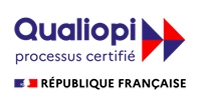
Oups, page introuvable !
Voici quelques informations utiles à la place :
Diplôme Universitaire
DU avec Paris 8
Le Diplôme « Clinicien de la reation et intervention stratégique » comprend 92h de cours, (dont 3 supervisions), 90h de travail personnel et 147h de stage pratique. Il permet d’acquérir un premier niveau généraliste en méthodologie et pratique à l’approche systémique stratégique.
Formation certifiante
Clinicien de la relation
Le niveau « Fondements de l’intervention en approche systémique stratégique » comprend 104h de formation (dont 3 supervisions individuelles de 45 mn) et 90h environ de travail personnel. Il permet d'acquérir les compétences fondamentales en approche systémique.
Diplôme
Coach systémique
Vous travaillez dans les ressources humaines, vous êtes déjà coach en entreprise ou en libéral, vous dirigez une entreprise, vous êtes chef de projet, vous managez une équipe, rejoignez-nous pour renforcer vos compétences en matière de management relationnel et obtenir un diplôme de Coach Stratégique.



